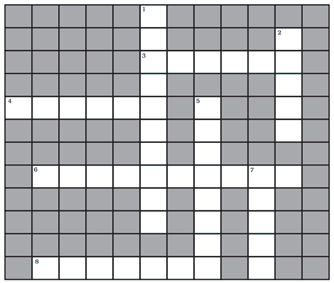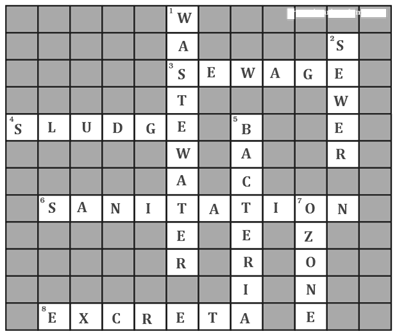NCERT Solutions for Class 7 Science Chapter 18 Wastewater Story
NCERT Solutions for CBSE Class 7 Science Chapter 18 Wastewater Story are given below. These solutions help students to clear their doubts and to obtain good marks in final exam. Class 7 Science NCERT questions and answers provided in this article are strictly based on the CBSE syllabus and curriculum.
Class 7 Science Chapter 18 Wastewater Story NCERT Solutions
Class 7 NCERT Solutions for Science Chapter 18 includes all the intext and exercise questions. All these questions are solved by experts with a detailed explanation that will help students complete their assignments and homework.
EXERCISES
Question 1: Fill in the blanks:
(a) Cleaning of water is process of removing __________
(b) Wastewater released by houses is called __________.
(c) Dried __________ is used as manure.
(d) Drains get blocked by __________ and __________.
Answer: (a) Cleaning of water is a process of removing pollutants.
(b) Wastewater released by houses is called sewage.
(c) Dried sludge is used as manure.
(d) Drains get blocked by oils and fats.
Question 2: What is sewage? Explain why it is harmful to discharge untreated sewage into rivers or seas.
Answer: Sewage is the wastewater containing both liquid and solid wastes produced by human activities from homes, industries, hospitals, offices, etc.
Sewage contains various contaminants including disease-causing bacteria and other microbes. If untreated sewage is discharged into rivers or seas, then the water in the rivers or seas would also get contaminated. If this contaminated water is used for drinking, then it can cause diseases such as cholera, typhoid, dysentery, etc. which may lead to death. That is why it is harmful to discharge untreated sewage into rivers or seas.
Question 3: Why should oils and fats be not released in the drain? Explain.
Answer: Oil and fats can clog the drains reducing its effectiveness in filtering water. In open drains, they block the pores in the soil and thus hamper the filtration by soil. Hence, oil and fats should not be released in the drain.
Question 4: Describe the steps involved in getting clarified water from wastewater.
Answer: The steps involved in getting clarified water from wastewater are as follows:
(i) Use an aerator to bubble air through the wastewater. A mechanical stirrer or a mixer can also be used in place of the aerator. This helps in reducing bad odour of the wastewater.
(ii) Then, the water is filtered through the layers of sand, fine gravel, and medium gravel. Filtration makes the wastewater clean from various types of pollutants. The water is filtered continuously until it becomes clear.
(iii) Then any disinfectant such as chlorine tablet is added to the filtrate and stirred to obtain completely clear water.
Question 5: What is sludge? Explain how it is treated.
Answer: Sludge is human waste (like faeces) in waste water left during sewage treatment. Since it is organic waste, it is used to produce bio gas and manure.
Sludge is collected by a scrapper. It is transferred to a separate tank where it is decomposed by the anaerobic bacteria. The biogas produced in the process can be used as fuel. After the aerator tank, microbes and human waste settle down and form activated sludge. The activated sludge is about 97% water. The water is removed by sand drying beds or machines. Dried sludge is used as manure, returning organic matter and nutrients to the soil.
Question 6: Untreated human excreta is a health hazard. Explain.
Answer: Untreated human excretions are a health hazard. It causes pollution of soil and water including the underground water. Thus, it contaminates the sources of water from which people collect water for drinking and household purposes. When this contaminated water is used for drinking, it can cause diseases such as cholera, typhoid, hepatitis, dysentery, etc., which may even lead to death.
Question 7: Name two chemicals used to disinfect water.
Answer: Chemicals like chlorine (Chlorine dioxide) and ozone (in the pharmaceutical industry) are commonly used to disinfect water.
Question 8: Explain the function of bar screens in a wastewater treatment plant.
Answer: Bar screens clear the wastewater of all the physical impurities. Large size waste like napkins, plastics, cans etc. are removed from the wastewater through the bar screens.
Question 9: Explain the relationship between sanitation and disease.
Answer: Sanitation and disease are related to each other. Sanitation involves proper disposal of sewage and refuse from house and public places. If sanitation is there, no disease will occur, but if sanitation is not there various types of disease will occur and spread. So sanitation should be kept to avoid disease.
Question 10: Outline your role as an active citizen in relation to sanitation.
Answer: A citizen has many responsibilities regarding sanitation. Among other things, an active citizen should do the following with regard to maintaining proper sanitation:
(i) Ensure that his surroundings (both inside and outside home) are clean.
(ii) Ensure that the sewerage system in his house is properly managed.
(iii) If he notices some leakage or other problem in the sewerage system, he should report it to the municipality.
Question 11: Here is a crossword puzzle: Good luck!

Across
3. Liquid waste products
4. Solid waste extracted in sewage treatment
6. A word related to hygiene
8. Waste matter discharged from human body
Down
1. Used water
2. A pipe carrying sewage
5. Micro-organisms which causes cholera
7. A chemical to disinfect water
Answer:

Question 12: Study the following statements about ozone:
(a) It is essential for breathing of living organisms.
(b) It is used to disinfect water.
(c) It absorbs ultraviolet rays.
(d) Its proportion in air is about 3%.
Which of these statements are correct?
(i) (a), (b) and (c)
(ii) (b) and (c)
(iii) (a) and (d)
(iv) All four
Answer: (ii) (b) and (c)